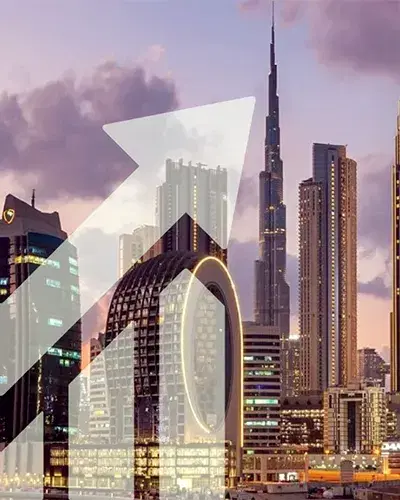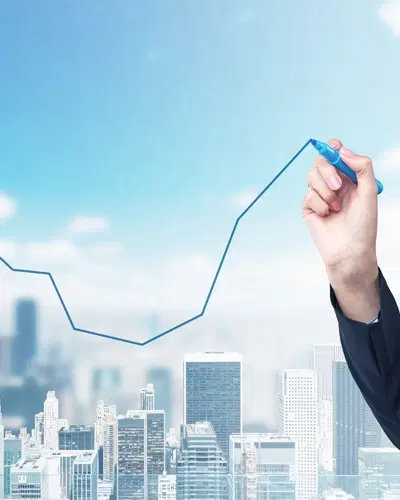Dubai’s Economic Transformation
Dubai's economic transformation over the past century is one of the most dramatic in modern history. From a small fishing and trading settlement with an equally small agriculture-based economy, the emirate transformed into a global hub for oil, real estate, tourism, and finance.
Let’s have a look at the entire breakdown of this transition in very short with some supporting data to highlight this transformation.
1. Early Economy: Agriculture, Fishing & Pearling (Pre-1950s)
- Primary Sectors: Date farming, fishing, and pearl diving were the most significant activities contributing to the primary sector.
- Contribution to GDP: Almost the entire (~100%) economy ran with the contributions by traditional sectors and trade well before the discovery of oil
- Population: Fewer than 20,000 people by the 1950s.
However, with the rise of Japanese cultured pearls clubbed with the Great Depression, the pearling industry of Dubai collapsed in the 1930s, which led to very tough economic conditions in the country.
2. Oil Discovery & Initial Boom (1966–1980s)
- Oil Discovered: Oil was discovered for the very first time in 1966 in the offshore Fateh field.
- First Oil Export: 1969.
- Oil’s GDP Contribution: By the 1970s, oil accounted for nearly 50% of Dubai's GDP.
- Infrastructure Development: The revenue generated from Oil was used to fund roads, airports (Dubai International Airport opened in 1960). The revenues were also used to look after the ports like Port Rashid in 1972.
Population Boom: From ~20,000 in 1950 to ~370,000 by 1980. The boom in oil prices almost quadrupled the population in the 1970s.
NOTE: Oil revenues were a very vital part of Dubai’s economy to give it the required push. But, along with that, Dubai’s leadership always kept planning and believed in diversification unlike some neighboring Emirates that kept heavy dependence on hydrocarbons.
3. Diversification: Rise of Trade, Real Estate & Tourism (1990s–2000s)
- Jebel Ali Port & Free Zone: They were opened in 1979, and as soon as they switched on functioning, their popularity kept climbing rapidly, making them the world’s largest man-made port. This boost also took the non-oil trade by storm and took it along the rise.
- Real Estate Liberalization: In one of the most bold moves of the decade back then, Dubai announced to allow the foreign freehold ownership in 2002, which sparked an unprecedented property boom over there.
Major Developments:
- Palm Jumeirah (launched 2001)
- Downtown Dubai, Burj Khalifa, and Dubai Marina
Tourism Push:
- Launch of Emirates Airlines in 1985.
- Establishment of Dubai Shopping Festival (1996) and other mega attractions.
- Oil GDP Share Decline: By 2000, oil accounted for less than 7% of Dubai's GDP.
4. Present Economy (2020s – 2025)
- Oil GDP Share (2023–2024): Coming as a shock to the world, for the very first time since its discovery, the oil share in Dubai’s GDP was estimated at less than 1%.
- Top Sectors (2024 GDP Breakdown): Trade leads with 23%, followed by Real Estate & Construction and Transportation & Logistics at 14% each. Dubai real estate is on a rise every single year, which is a direct reflection of the fact that the global investors and home buyers are inflicting healthy benefits out of it.
Tourism Data (2023):
- Over 17.15 million international visitors poured into Dubai, thereby ranking it 2nd globally after Paris (UNWTO).
- Dubai International Airport remained the world's busiest for international passengers (~86.9 million in 2023).
A timeline For Key Milestones in Dubai's Economic Shift
Dubai has continually adapted to global economic changes, and as we step ahead in 2025, there is a whole new inflection point where the city finds itself. There has been a pretty robust pouring in of FDI since Post-EXPO. Also, a very sharp incline in Dubai’s population has positioned Dubai as a global investment magnet, making an optimistic impact on Dubai real estate as well.
In fact, if we look at the latest data by Dubai Land Department (DLD), over AED 528 billion worth of real estate transactions were recorded in 2024 alone, which are record all time high. Such is the demand of real estate in Dubai by not just the natives, but from investors and home buyers across the globe.
Before we jump onto the other subjects related to Dubai Real Estate, let’s have a look at the most recent data for Dubai real estate market report Q1 2025. This report clears out the most relevant information regarding the latest report on Dubai real estate. Have a look at how off-plan properties performed with respect to the secondary properties in the first quarter of 2025.
- Sales Volume Surge: Q1 sales volumes rose by 24%, indicating strong market momentum.
- Quarter-on-Quarter Growth: Compared to Q4 2024, transaction volume showed a 3% uptick, reflecting market resilience.
- Year-on-Year Sales Value Growth: Total sales value increased by 31% YoY, highlighting a trend of higher-value transactions.
- Investor Confidence: The rise in value reflects that the deal sizes are getting bigger than usual i.e above than what average deal sizes are. It also shows that the investor’s appetite is also growing as their confidence grows.
- Positive Market Outlook: The consistent performance suggests the market is well-positioned for continued growth in the coming quarters.
The above inferences regarding the Off-plan Vs Secondary market transactions can be seen through a simple bar graph to make things more clear.
Now, as we’ve gone past the economic transformation that Dubai saw over so many decades, the question arises what makes Dubai so compelling in today’s perspective when there is so much competition among countries to attract as many investors as possible.
Well, the answer isn’t that twisted or tough enough, as Dubai is very resilient even amid global economic uncertainty, and its progressive vision, specially through the Dubai 2040 Urban Master Plan is a torch bearer in itself for both the investors and home buyers to cash in benefits in 2025 and beyond.






